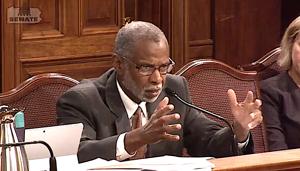Heads of Pennsylvania universities grilled over minority representation among faculty

(The Center Square) – Representatives of Pennsylvania’s four state-related universities told lawmakers recently that when it comes to addressing racial disparities within their faculty, they’d prefer to continue working on changing from within rather than changes in law.
The hearing with the Pennsylvania Senate Appropriations Committee centered on Penn State University, Lincoln University, Temple University and the University of Pittsburgh, schools that get state funding but are not part of the Pennsylvania State System of Higher Education.
Sen. Art Haywood, D-Cheltenham Township, pointed to the long history issues when it comes to diversification of university faculty, stating that Title VI of the Civil Rights Act of 1964 seemed to have fallen by the wayside over the years.
“I’m wondering what kind of legislation would you need so we can take this long privilege of faculty hiring each other and excluding African Americans,” he said. “What can we do so we can take away this power they’re using to exclude people of color from the faculty?”
Penn State President Eric Barron said he preferred to educate faculty members to notice and avoid bias in their decision making while leaving the decision-making on new hires to them.
Lincoln University President Brenda Allen touted her prior experience with diversity staffing, having increased people of color by about 30% when she was at Brown University.
She said legislation should be for providing resources to specifically reach goals of diversity only, and that if there isn’t a commitment at the top levels of an institution, nothing will change.
“I think it would greatly help institutions, once they have the proper signal from the top, to be able to work with their departments and their faculty to make a change,” she said.
Haywood considered the responses “inadequate.” He said students he has spoken with have complained there are no Black faculty members or instructors.
“How long is it going to take to educate the faculty members to understand that it’s unacceptable to have a faculty group that’s all white?” he said, calling the situation a concern throughout the state.
“If you’re going to tell me its leadership from the top that’s going to change it, well, what are you going to do?” he asked.
Barron said current pressure by Penn State’s administration are higher than previously to be more inclusive in the hiring process. The university has a select commission run by volunteers to address racism and bias.
“But I will tell you this – it is not an easy issue because we’ve committed many, many different programs,” he said. “I think there’s a lot of effort in this space, but it is the last part of what has proven to be a difficult problem is faculty composition.”
Disclaimer: This content is distributed by The Center Square


